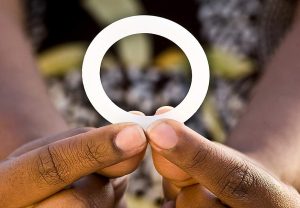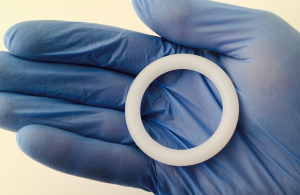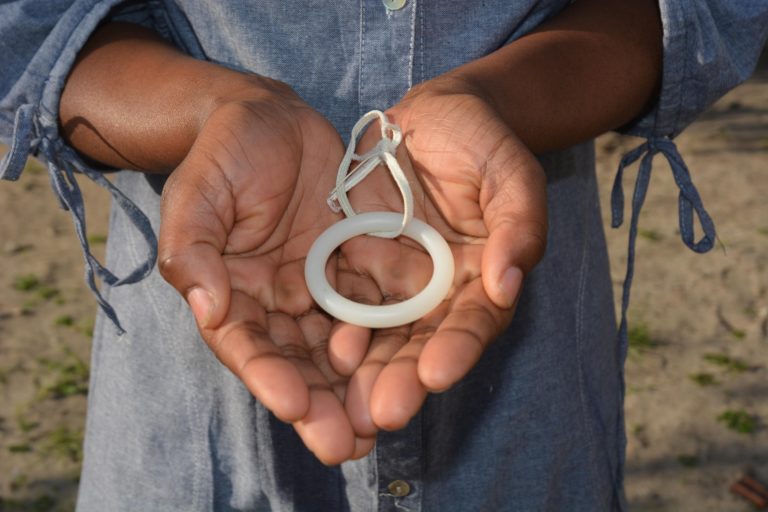Voila! The vaginal ring that protects women from HIV for close to a month
Page Contents
Voila! The vaginal ring ready to hit the market
On Monday, the International Partnership for Microbicides (IPM) welcomed a positive opinion on the use of the vaginal ring, the first long-acting HIV prevention product in the market.
The European Medicines Agency (EMA) has given the dapivirine vaginal ring – designed to reduce the risk of HIV-1 infection in cisgender women in developing countries – the green light.
“The EMA’s opinion is a significant step forward for women, who urgently need and deserve new, discrete options to manage their HIV risk on their own terms,” said Dr. Zeda F. Rosenberg, founding chief executive officer of IPM, the nonprofit that developed the dapivirine ring and is the product’s regulatory sponsor.
HIV is still a menace despite numerous strides having been made over the years. In 2017 alone, nearly 870,000 women and girls acquired HIV, according to UNAIDS.
How the dapivirine vaginal ring works

The circular ring is placed in a woman’s vagina as the name suggests. The ring is made of a flexible silicon matrix polymer so it doesn’t hurt a woman. Once placed inside the vagina the ring, which contains the antiretroviral medicine dapivirine, slowly releases the medicine over a period of 28 days.
The ring delivers dapivirine directly at the site of potential infection, with slow systemic absorption. Dapivirine reduces the risk of HIV-1 infection after 24 hours of ring insertion.
Also Read: Bolivia sex workers are donning see-through raincoats to keep Covid-19 at bay
The ring is a major breakthrough
The vaginal ring won praise primarily because it gives women an option they didn’t have until now. Women who choose not to or are unable to use the daily oral antiretroviral (ARV) pill known as PrEP (pre-exposure prophylaxis), a popular HIV prevention method more widely available in Africa, can now rely on the ring.
Despite their effectiveness, not all women are able to use Oral PrEP. In addition, although condoms are indicated for use with the ring, they are not practical for women who are unable to negotiate their use with male partners or who are at risk of sexual or intimate partner violence.
“Women in Africa have been left behind by progress against HIV for far too long, and today’s announcement is a landmark for women’s HIV prevention,” said Dr. Linda-Gail Bekker, professor of medicine and deputy director of the Desmond Tutu Health Foundation, immediate past president of the International AIDS Society and national principal investigator for South Africa on The Ring Study, Medicalxpress quoted him as saying.
“Offering women multiple methods like the monthly ring and daily oral PrEP is vital to controlling the epidemic and to ensuring their sexual and reproductive health and rights.” he added.
Also Read: Sex during coronavirus: New trends emerge
Whats’more, during research it was found that the method reduced the risk of HIV-1 infection in women by 39 percent and was well tolerated with long term use.
Way forward for the vaginal ring

IPM now plans to submit the first applications this year to countries in Eastern and Southern Africa where studies of the ring took place. The countries include Kenya, Malawi, Rwanda, South Africa, Tanzania, Uganda and Zimbabwe.
The organisation will also submit an application to the US Food and Drug Administration this year.
The following are just some pending next steps the ring has to take
WHO guidelines and prequalification: WHO will review evidence on the ring as part of its guideline process and consider using an abbreviated review of the product for prequalification, a quality assurance designation for medicines that facilitates access to medicines that meet global standards for quality, safety and efficacy.
- Regulatory reviews in Africa: In parallel, the ring will be reviewed by regulators in each country where it would be used and, if approved, adopted into national HIV prevention policies. Because the EMA’s Article 58 opinion is recognized by many countries in Africa and IPM is submitting to those countries through a process coordinated by the WHO, it may help accelerate national reviews. IPM plans to submit the first applications this year to countries in eastern and southern Africa where the need remains high, studies of the ring took place and where IPM can build on oral PrEP implementation (Kenya, Malawi, Rwanda, South Africa, Tanzania, Uganda and Zimbabwe).
- US regulatory review: IPM will also submit to the US Food and Drug Administration in 2020.
- Continued market and implementation research: Market and implementation research has been underway with partners for several years to inform demand creation strategies; develop information, education and communications (IEC) materials for women and healthcare providers; create product delivery models; and to map the supply chain networks needed for rollout.
- Ring rollout: IPM will also continue working with governments, funders and other partners to discuss and plan for ring introduction.
 3340
3340







